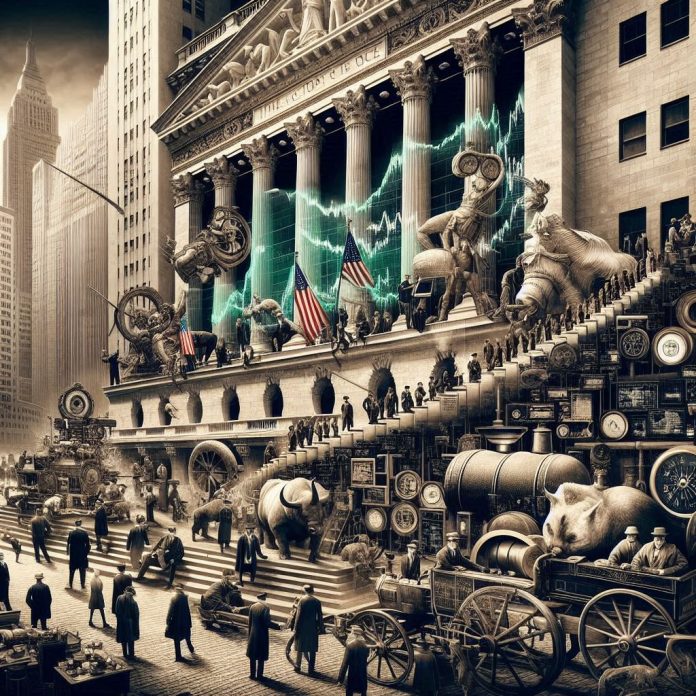As I delve into the history of Wall Street, I am reminded of its transformation from a modest marketplace to the financial heart of America and, arguably, the world. Wall Street isn’t merely a location; it’s a symbol of economic power, innovation, and, at times, turmoil. In this article, I will explore the rich history that has shaped Wall Street into what it is today, examining its key milestones, notable events, and the impact it has had on global finance.
The Birth of Wall Street
The story of Wall Street begins in the early 17th century. In 1624, the Dutch established a trading post on the southern tip of Manhattan, which later became New Amsterdam. The name “Wall Street” originated from a wall built by the Dutch in 1653 to protect the settlement from potential attacks by Native Americans and the British.
As I reflect on this early period, I can see how the foundation for trade and commerce was laid. The wall was dismantled in 1699, but the name persisted, becoming synonymous with the burgeoning financial activities in the area.
The Birth of the Stock Exchange
In the 18th century, Wall Street became the epicenter for financial transactions. In 1792, 24 stockbrokers signed the Buttonwood Agreement under a buttonwood tree on Wall Street, marking the official beginning of the New York Stock Exchange (NYSE). This agreement established a framework for trading securities and set the stage for a more organized marketplace.
I find it fascinating how this simple agreement has evolved into one of the largest stock exchanges in the world. The NYSE has been crucial in facilitating capital for businesses and investors alike.
The 19th Century: Rapid Growth and Innovation
The 19th century was a period of rapid growth and innovation on Wall Street. The Industrial Revolution transformed the economy, and as new industries emerged, so did the need for capital. Railroads, steel, and telecommunication companies became dominant players, and the stock market boomed.
I think about how the introduction of limited liability corporations in the mid-1800s revolutionized investment. It allowed individuals to invest in companies without risking their entire fortune, leading to an influx of investment and further fueling economic growth.
The Panic of 1907
However, the path to prosperity was not without obstacles. The Panic of 1907 serves as a stark reminder of the fragility of the financial system. A series of bank failures and a lack of liquidity led to a stock market crash and widespread panic.
In learning about this event, I realize how crucial it was in prompting regulatory reforms. The establishment of the Federal Reserve System in 1913 aimed to stabilize the economy and prevent future panics, showcasing how Wall Street continually adapts to the challenges it faces.
The Roaring Twenties and the Crash of 1929
The 1920s, often called the “Roaring Twenties,” were a time of economic prosperity and cultural change. Wall Street played a pivotal role in this era, with stock prices reaching unprecedented heights. I can almost hear the excitement in the air as people flocked to invest, believing that the market would only go up.
However, the euphoria came to an abrupt halt with the stock market crash of 1929. The fall from grace was dramatic, leading to the Great Depression. As I reflect on this period, I recognize the lessons learned about speculation, risk, and the need for regulatory oversight.
The New Deal and Regulation
In response to the economic turmoil, President Franklin D. Roosevelt introduced the New Deal in the 1930s. One of its key components was the establishment of the Securities and Exchange Commission (SEC) in 1934. The SEC was created to regulate the securities industry and protect investors, ensuring that the mistakes of the past would not be repeated.
This period of regulation has had lasting effects on how Wall Street operates today. The SEC continues to play a vital role in maintaining market integrity and investor confidence.
The Post-War Era and Globalization
The post-World War II era marked a new chapter for Wall Street. The United States emerged as a global economic leader, and Wall Street began to play a significant role in international finance. I see this time as the beginning of globalization, where financial markets became interconnected like never before.
The 1980s brought about significant changes as well. The advent of technology transformed trading practices, with computers and electronic trading systems revolutionizing the way transactions were executed. The introduction of financial derivatives allowed for more complex investment strategies, but it also introduced new risks.
The Dot-Com Boom and Bust
As I look back at the late 1990s, I remember the excitement surrounding the dot-com boom. The internet was changing the world, and Wall Street was at the forefront. Companies like Amazon and Google went public, and their stock prices skyrocketed.
However, the bubble eventually burst in 2000, leading to significant losses for investors. This serves as a reminder of the volatility and unpredictability of the market, something that continues to be relevant today.
The Financial Crisis of 2008
The financial crisis of 2008 was a watershed moment for Wall Street and the global economy. The collapse of major financial institutions, such as Lehman Brothers, sent shockwaves through the financial system. The crisis was rooted in the subprime mortgage market and a lack of regulatory oversight, leading to widespread economic devastation.
Reflecting on this crisis, I see how it prompted a wave of regulatory reforms, including the Dodd-Frank Act, which aimed to increase transparency and accountability in the financial sector. The crisis reshaped Wall Street’s landscape and emphasized the importance of risk management.
The Rise of Fintech
In recent years, I’ve witnessed the rise of fintech companies that are revolutionizing how we think about finance. From peer-to-peer lending to blockchain technology, these innovations are changing the way we invest, borrow, and transact. Wall Street is adapting to these changes, with traditional firms incorporating technology to enhance their services.
The increasing popularity of robo-advisors and digital trading platforms has made investing more accessible to the average person. In this new era, I believe Wall Street is no longer just for the wealthy elite but is becoming a space where everyone can participate in the financial markets.
Conclusion
As I reflect on the story of Wall Street, I am struck by its resilience and adaptability. From its humble beginnings to its current status as a global financial hub, Wall Street has weathered storms, embraced innovation, and evolved in response to the changing landscape of finance.
The lessons learned from its history are invaluable, reminding us of the importance of regulation, transparency, and the need for continuous adaptation. As we look to the future, I am excited to see how Wall Street will continue to evolve in the face of new challenges and opportunities.





.jpg?w=100&resize=100,70&ssl=1)
